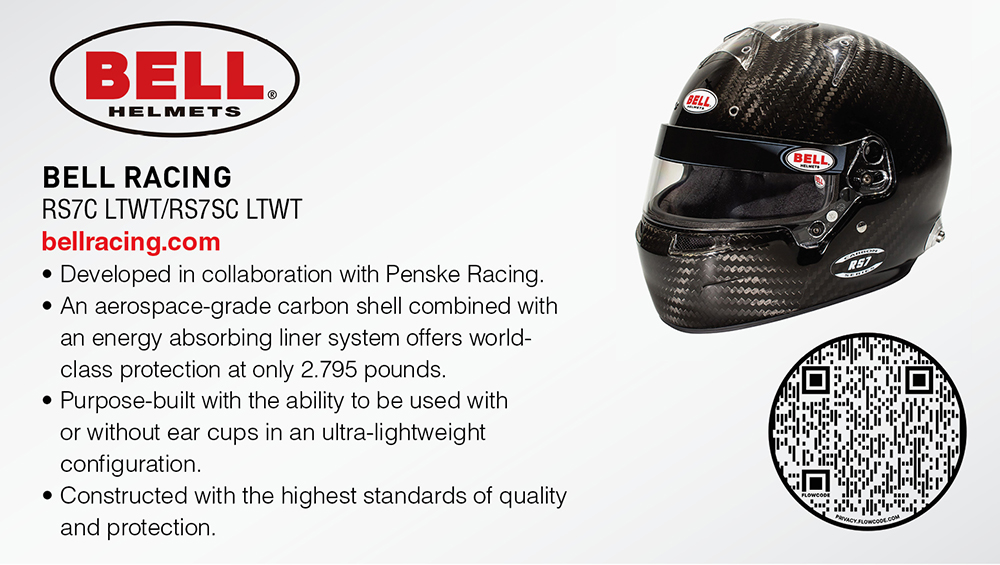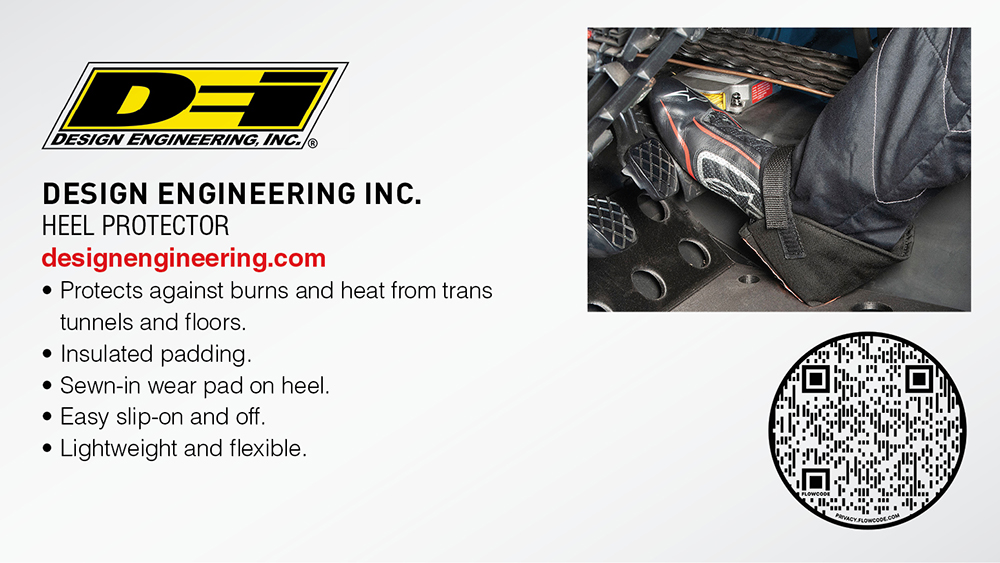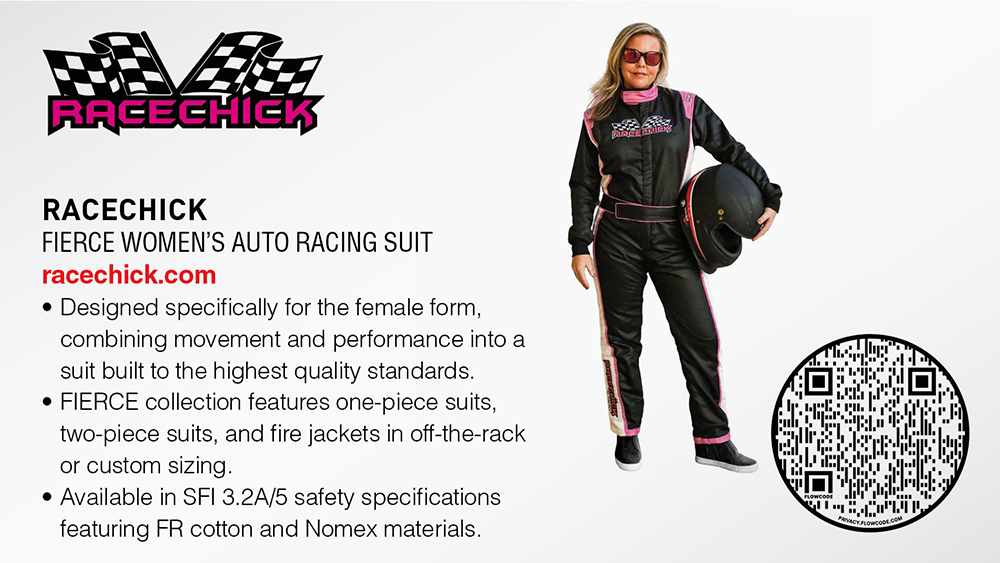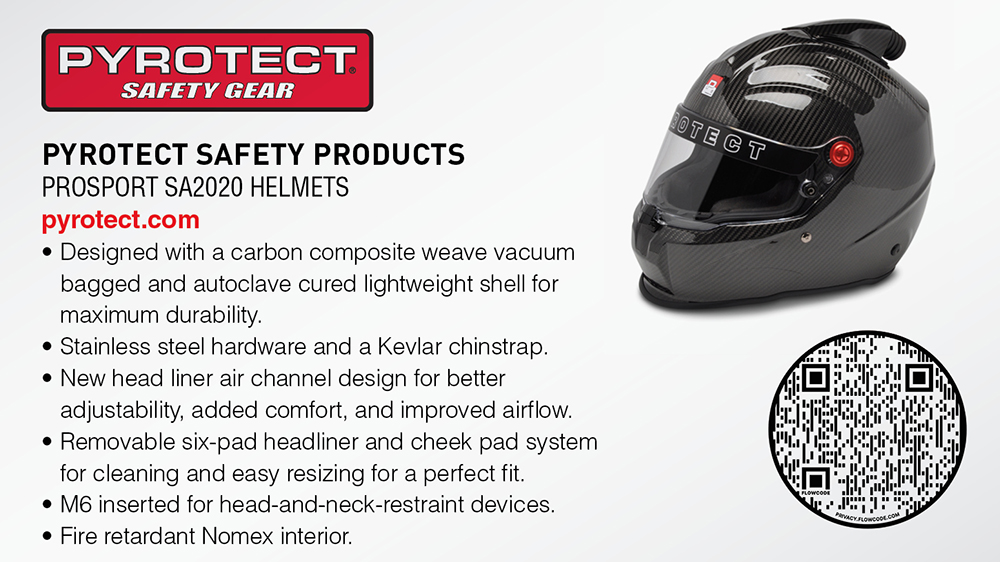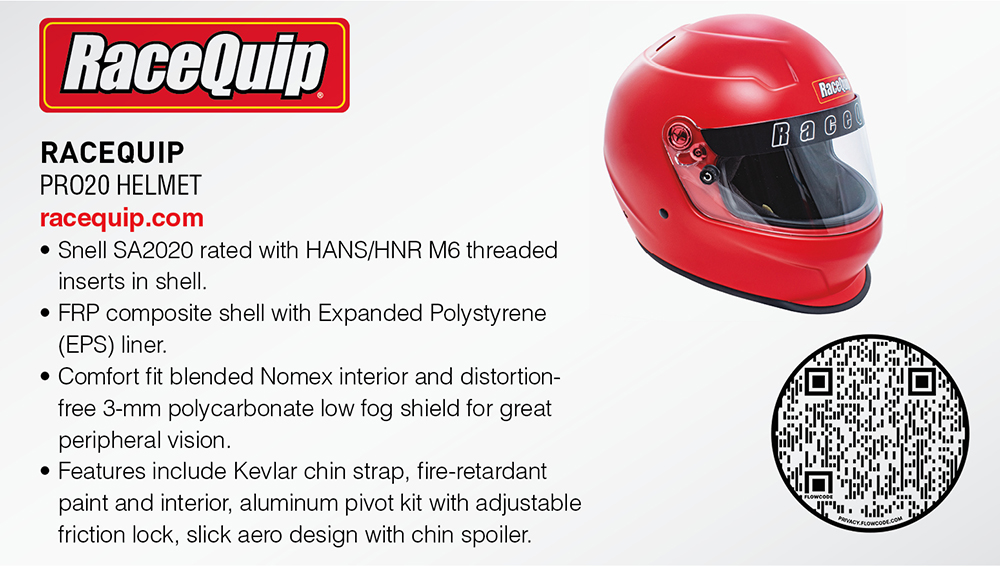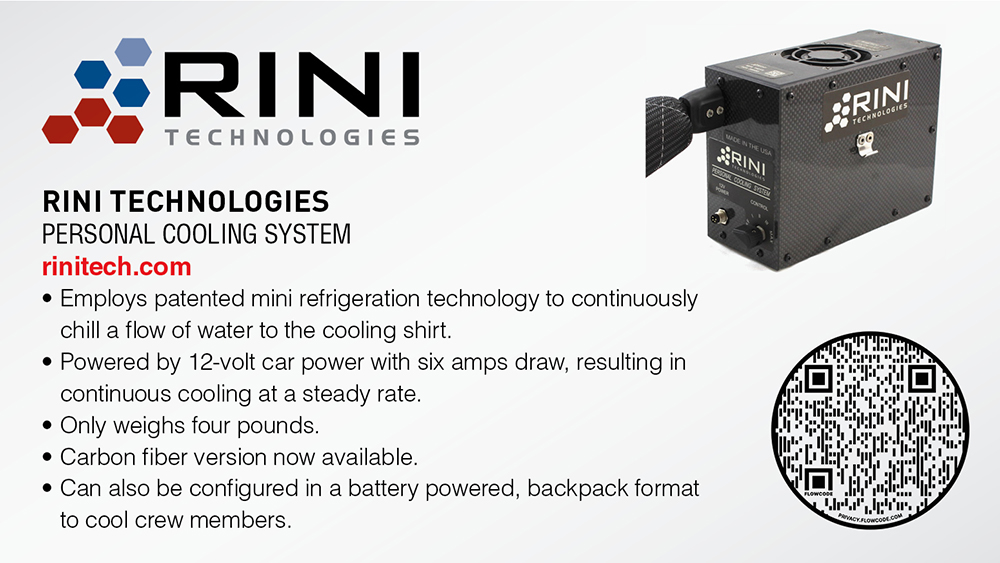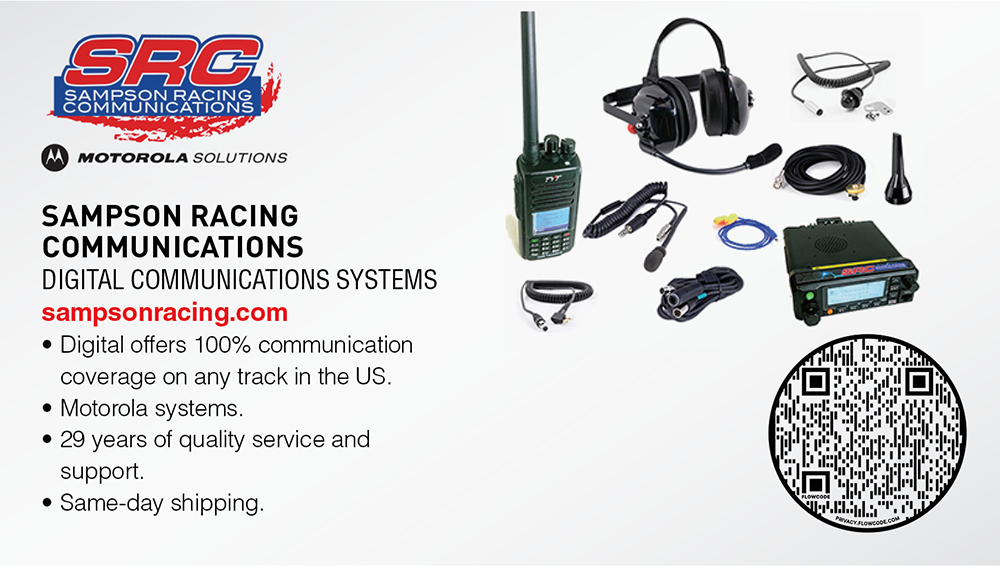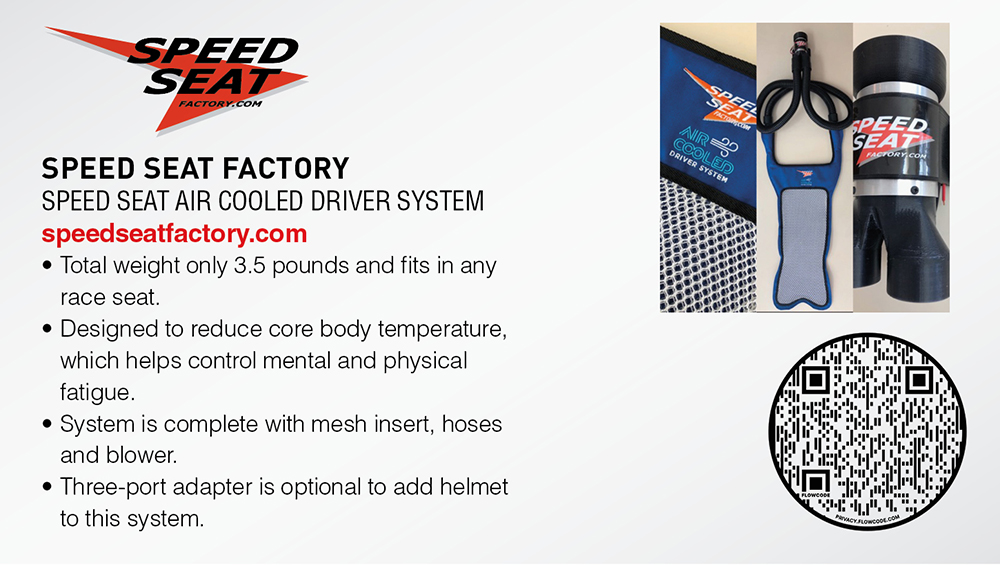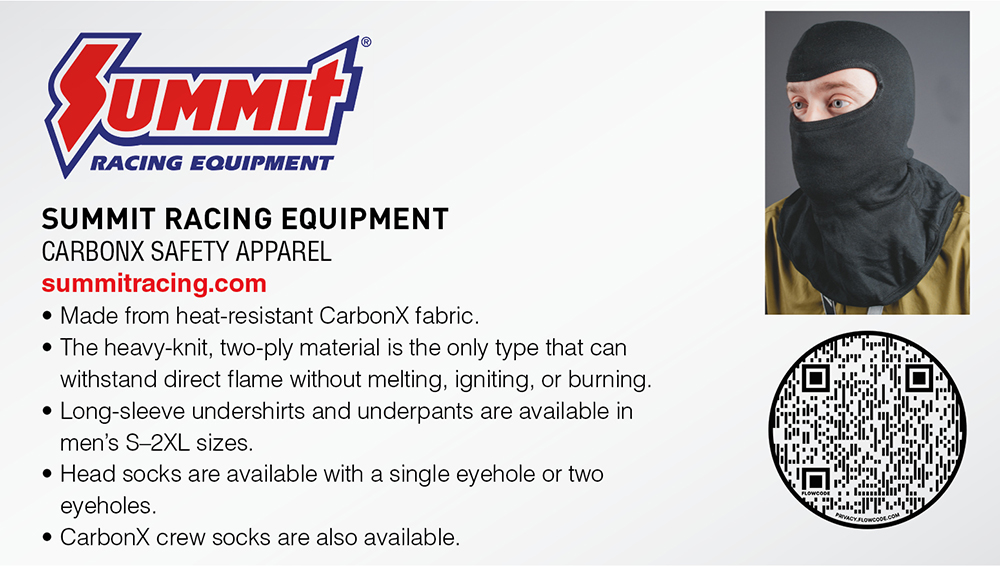SECURITY FORCES
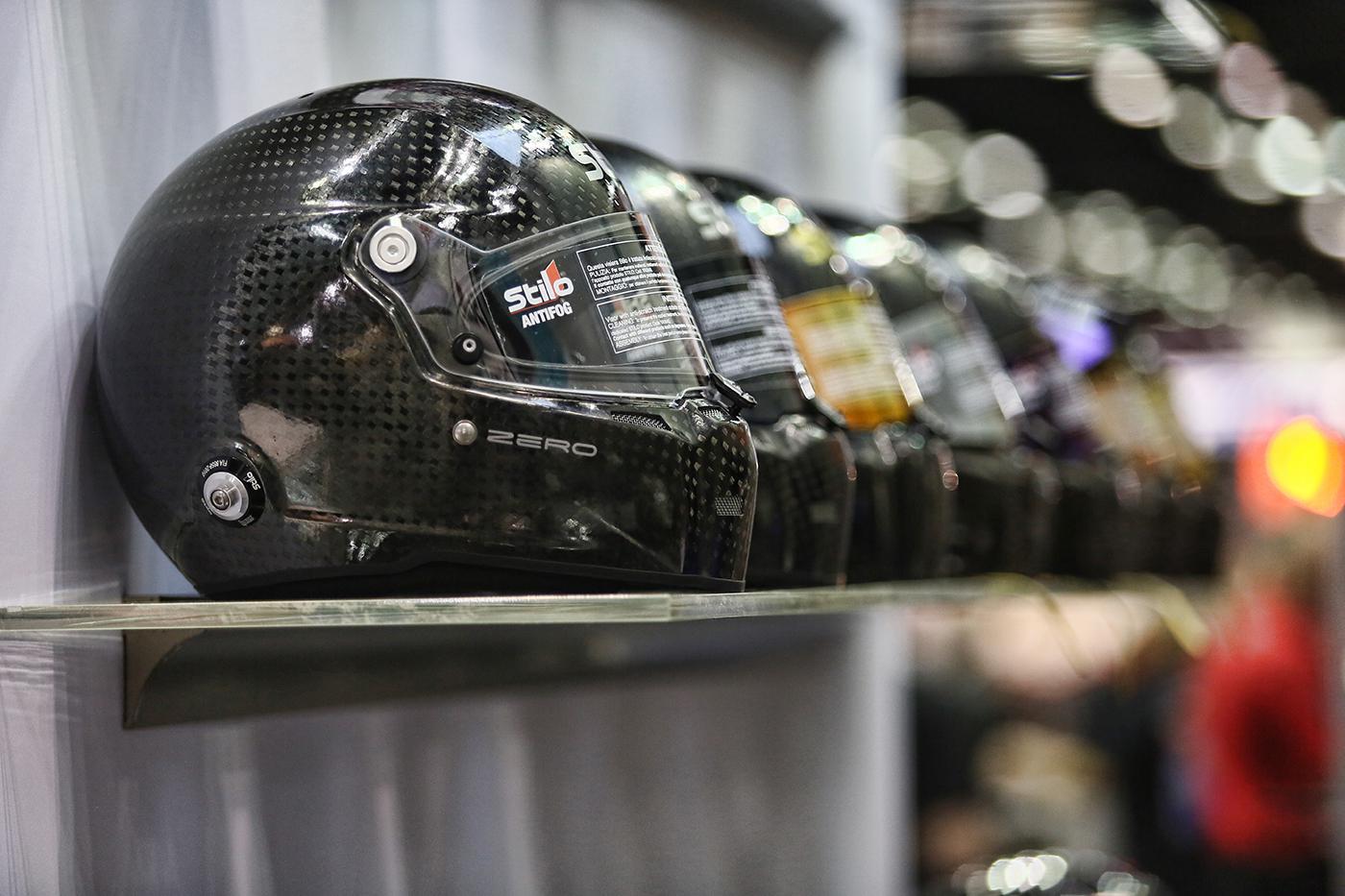
Manufacturers are meeting new standards with lighter and more advanced materials, while premium features are migrating to lower-priced driver safety products.
Driver safety equipment manufacturers report that business is booming as the sport roars back for 2021. And, fortunately for those behind the wheel, personal safety equipment keeps improving, getting lighter and more comfortable while meeting increasingly higher standards. In addition, some premium features are showing up in lower-priced products, including removable pads and more ventilation options in helmets. Meanwhile, there is also an emerging trend for lower-priced Nomex driving suits.
Beyond meeting or exceeding standards set by third-party organizations including FIA (Fédération Internationale de l’Automobile), the SFI Foundation and, strictly for helmets, the Snell Foundation, manufacturers are also locked in constant competition to improve driver comfort.
“You want the equipment to be transparent,” said Ben O’Connor of Impact Racing, Indianapolis, Indiana. “If you’re thinking about your equipment when you’re driving, something’s not right. But those are the more organic elements. There are no specs for them.”
With that in mind, here’s a look at eight trends we’re tracking in driver safety for 2021.
1. SUITS: LIGHTER BUT SAFER
SFI Foundation of Poway, California, issued its latest certification updates in June 2020, with SFI Spec 3.2A for drivers suits, and SFI Spec 3.3, which covers accessories including gloves, shoes, underwear, and balaclavas. Following each spec is a heat and fire protection rating, with SFI-1 being the minimum, and SFI-5 being more common.
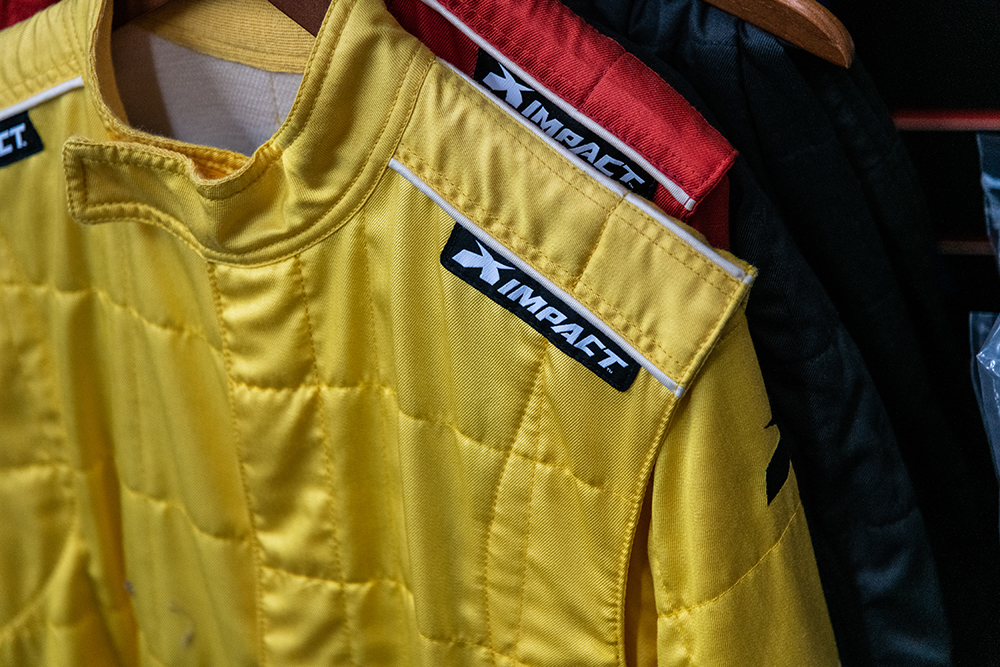
The number is an indicator of Thermal Protection Performance, or TPP. A suit with an SFI-5 rating has a TPP of 19, which translates into 10 seconds of protection before skin is subject to second-degree burns. A suit rated at SFI-20, as used in Top Fuel drag racing, has a TPP of 80, which equates to 40 seconds of protection.
Driver suits made from Nomex, a heat and fire-resistant fabric invented by DuPont in the 1960s, remain the popular choice across motorsports. They’re lighter and more comfortable than suits made from treated cotton materials and PROBAN but are also more expensive. An SFI-1 rated PROBAN suit can cost well under $200 but will be hotter to wear than Nomex.
“A driver who overheats can become dangerous on the track,” said Steve Russell of Pyrotect Safety Products, Redmond, Oregon. “Two years ago, we saw a racer removed from the track—he’d been suffering from heat exhaustion in the car and was taken to the hospital. He was wearing one of the heavy low-cost suits on a day that was over 100 degrees.”
The technology behind driving suits continues to evolve.
“Some of the biggest advancements in personal safety equipment have been in textiles,” O’Connor explained. “A lot of it is in the milling of the fabric, with micro air spaces to improve insulation. Suits today are lighter and more breathable than just five years ago, especially when getting into SFI-15 and SFI-20 suits.”
O’Connor points out, however, that meeting the new FIA 8856-2018 spec, which calls for an increase in protection from direct flames from 10 seconds to 12 seconds, will result in the super-lightweight suits adding back some weight.
This new FIA homologation standard is in effect for FIA’s highest classes, including Formula One, Formula Two, Formula E, WRC, WEC, World Rallycross, and European Rallycross. All other FIA-sanctioned races will require the new standard beginning January 1, 2029, and certified equipment will come with a 10-year expiration date. The new FIA spec also calls for an extra second of burn-through time for suit fabric when stretched while in the driving position.
“For racing requiring that standard, manufacturers are switching to a heavier suit while staying as light as possible,” said JR Twedt of K1 RaceGear, Carlsbad, California.
Twedt explained that K1 invested heavily in premium European Nomex a few years ago, a bet that paid off in 2020 as many factories shut down due to COVID-19. He noted that the cancelation of trade shows last year, including PRI, forced the company to offer remote fitting assistance for custom suits via Zoom calls.
“That part might not go away,” Twedt explained. “There is still a considerable number of people uncomfortable about being in crowds. You have to make it as convenient as possible for people to do business with you.”
2. NOMEX BECOMES MORE AFFORDABLE
Twedt also noted the requirement for SFI-5 two-layer suits for child drivers, as some racing classes such as micro sprints, sportsman drags, and even asphalt late models now allow drivers as young as 12.
“That was unheard of two years ago,” he said, citing it as a financial burden on some parents. “Kids outgrow suits quickly. They might need to buy two in a season,” he said.
Twedt referenced K1’s new Precision II youth suit, available down to size 5X-small, giving parents an entry-level Nomex option for their young competitors.
Other new Nomex products in K1’s pipeline include an entry-level sprint suit, a premium FIA 8856-2018 suit, and an entry-level Challenger Nomex and suede super-light go-kart shoe. Twedt anticipates a fall launch, just ahead of the PRI Trade Show.
Also reflecting an emerging trend in lower-priced Nomex suits, RaceQuip of Riverview, Florida, offers its SFI-5 rated Chevron-5 race suits. Patrick Utt of RaceQuip attributes this value proposition to the company’s large-scale manufacturing efficiency. “This allows a racer on a budget to buy a high-quality suit and not cut corners with regards to safety,” he said. “We manufacture these suits using two layers of premium Nomex fabric plus a durable Nomex knit material for all the expansion panels.”
Canadian manufacturer Red Camel offers a full line of SFI-approved suits, gloves, balaclavas, and helmets. Syed Tirmzi of the Winnipeg, Manitoba-based company touts a new SFI-5 double-layer Meta-aramid suit that he said performs on par with some triple-layer suits in the market, but is lighter weight.
“Considering the summer heat, we have come up with a combination that is lighter and cooler as compared to a triple-layer suit but with safety still staying as a top priority,” he noted.
For racers on a budget, Tirmzi touts a single-layer premium PROBAN suit that he said is more practical than regular FR cotton. “There’s no bad smell from a fabric FR coating, and you can still wash it with chemicals,” he added.
3. DON’T FORGET THE EXTREMITIES
The new FIA spec also calls for longer glove gauntlets and higher ankles on racing shoes. Weight is an important consideration for both.
“The highest level of interface with the vehicle is through the wheel,” said Impact’s O’Connor. “The tactile feel you get through the glove is critical. Thinner materials are needed for lightness but must retain grip and prevent the glove from bunching up.”
He described Impact’s Alpha glove using material cut in such a way that it is “pre-curved” to naturally wrap around the steering wheel and not bunch up under fingers.
Twedt said the Flex Gloves introduced by K1 two years ago use SFI- and FIA-rated two-layer bonded Nomex. Bonding the layers together, rather than stitching, also prevents the material from bunching up in the driver’s hands.
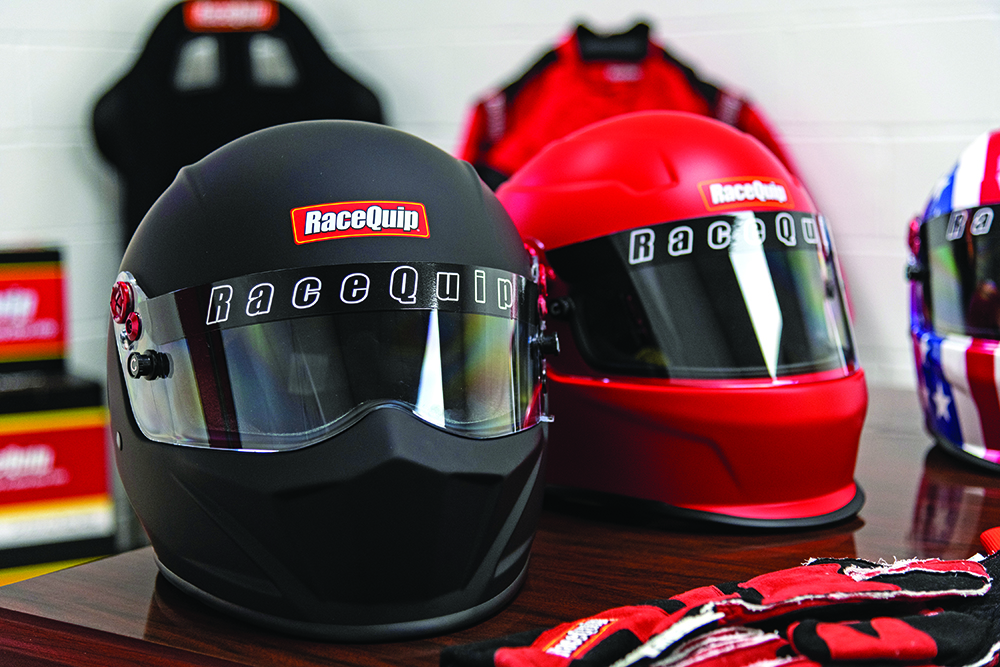
4. HELMETS: MOVING TO SNELL SA2020
Helmets can have either an FIA or Snell certification, or both, which is referred to as “dual homologation.” However, the new FIA 8860-2018 spec by itself does not include a Snell component. “You could buy a $4,000–$5,000 helmet that’s FIA rated but won’t be allowed in a race that requires a Snell rating,” cautioned Kyle Kietzmann of Bell Racing USA, Champaign, Illinois.
Founded in 1957, the Snell Foundation in North Highlands, California, revises its standards every five years. The latest standard, SA 2020, took effect in October 2020. The SA 2015 helmets will remain available and allowed for racing, but racers should always check with series rules beforehand to ensure compliance.
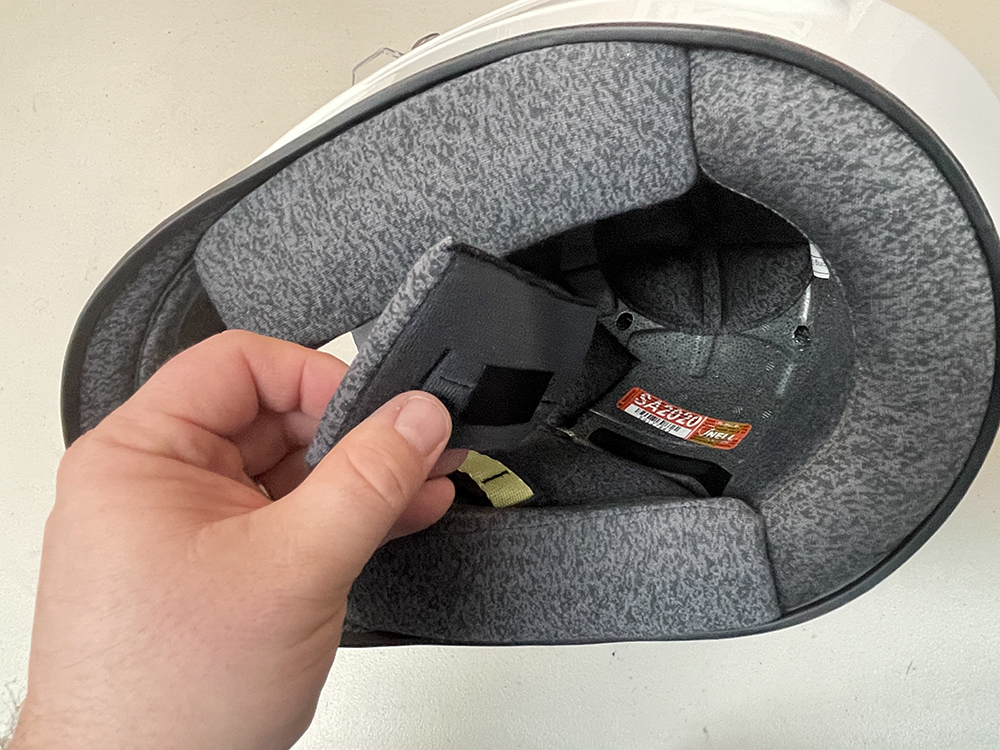
“There’s not much difference between SA 2015 and SA 2020,” said Russell of Pyrotect. “Shell impact has gone up a bit, but shield impact is the same.”
Keitzmann concurred, adding, “As things progress, you want to be able to get the benefit of new materials and construction techniques. We recommend replacing a helmet every three to five years anyway as part of your safety routine.”
5. HELMETS: TAKING OFF THE WEIGHT
Inexpensive entry-level helmets can exceed four pounds, while the lightest carbon fiber helmets priced are under three pounds.
Bell Racing’s RS7C Lightweight was developed initially for Penske Racing’s NASCAR drivers, but is now available to anyone. Kietzmann described the RS7C as “race ready” at just under 2.8 pounds.
“We applied lessons learned from our FIA Formula One helmet,” Kietzmann said. “We use a unique compression molding system with pre-preg carbon fiber material that enables a really light shell while meeting all impact standards.”
(For reference, the Bell Formula One helmet is a bit heavier at just over three pounds, since it has different ballistic characteristics that require more material in the front for the FIA spec.)
Bell last year introduced a sprint car version, the RS7SC Lightweight, which also weighs just under 2.8 pounds but is non-ventilated to seal out dust and dirt, and also features a duckbill. Earcups can be added for noise attenuation.
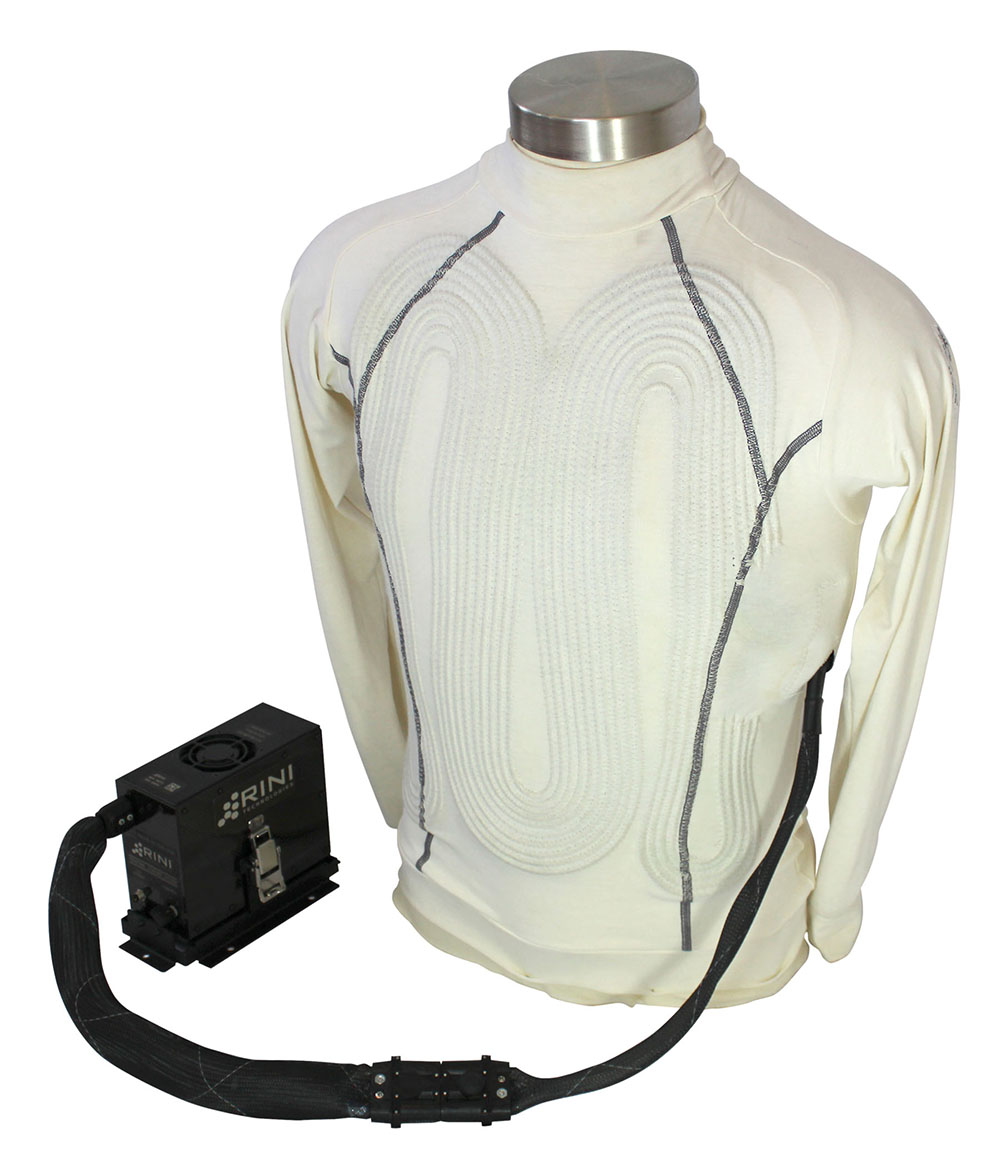
“Weight is not a criteria for testing, but helmet makers consider it critical to prevent secondary type injuries, concussions, and neck injuries from whippage,” said O’Connor.
He cited advances in the textile mats used for weight reduction. “Before, you’d have alternating layers of fiberglass, Kevlar, and carbon fiber lay ups in different orders. Now, there is a variety of different combinations of materials in those mats that we have not seen before. We’re gaining a lot of strength that way while maintaining a light shell. We’ve seen big improvements in both impact resistance and controlling G forces, as well as being able to lighten the helmet.”
6. KEEPING YOUR COOL
Track safety depends on drivers keeping cool heads—figuratively and literally. Air circulation systems, also known as forced air, are becoming more prevalent.
“Bill Simpson, founder of Impact, developed a method years ago for getting air into the top of the helmet,” O’Connor said. “Inside the helmet, a series of channels direct the airflow. Impact owns the patent.”
Others, too, offer channeled helmets. Pyrotect has seen forced-air models becoming almost the majority of its helmet sales, according to Russell.
“We’re seeing vehicles that never ran pumped air doing so now,” he said. “Combined with an air-channeling helmet, it really helps the driver stay cool. Pumper systems have gotten better, too.”
The company’s higher-end carbon fiber helmets, the Pro Airflow and Pro Sport, offer air channeling and, in the Pro Sport, a corrugated liner. “The corrugation gaps go in 3/8-inch increments where the liner is a bit recessed from the head,” Russell explained. “The top of the pad is all channeled and then channels air around the top to the side pads. Four slots separate the two sides, forehead, and rear pad to create a larger channel.”
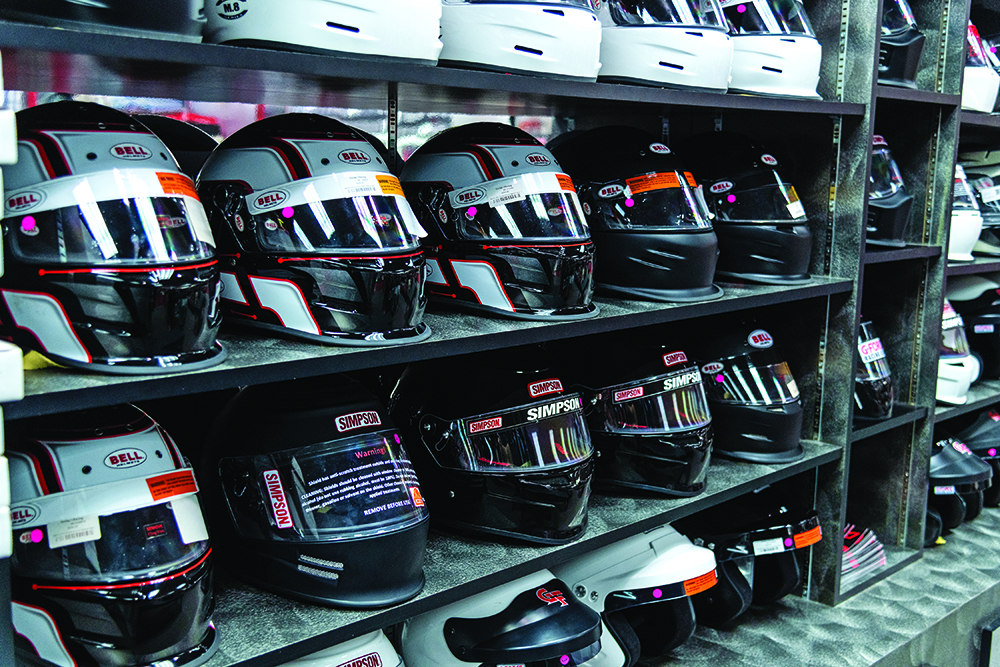
Pyrotect’s newest helmet, the Pro Ultra Tri-Flow, can be used as a standard or forced-air helmet, the latter with entry on the side or top. Covers on both the left and right side of the chin area enable the user to move the side air position, which is ideal for a driver and co-driver with a pumper system in between. On the comfort front, all Pyrotect helmets feature a customizable six-pad liner system with seven different thickness pads to adjust the fit.
Bell’s new BR8, due out in June, offers five different airflow options. It is designed for off-road racing and dirt racing that use external airflow. The customer can choose an air portal on top, 3/4 on either side, or side air in front—left or right.
“Unique to this model, there is an air chamber on top to distribute air evenly around the crown,” said Kietzmann. “You get consistent, even airflow no matter where the air comes in.”
Cooling systems go beyond just cooling the driver through the helmet. Although, some people may view cool suits, like Rini Technologies’ Personal Cooling System-Automotive (PCS-Auto), as more of a comfort item than a piece of safety gear. “But in truth it’s really about performance and safety more than anything,” said Dan Rini of the Oviedo, Florida, company. Racers “are tough. They don’t need comfort. But we’ve all seen drivers get out of the car and pass out on crazy-hot days. That’s not good.”
The PCS-Auto system consists of an SFI-approved cooling shirt with surgical tubing sewn into it that’s worn under the firesuit. A small tube sticking out of the shirt connects to a refrigerator device, mounted in the car, with water in it. “As long as it gets electrical power from the car, it keeps cooling that water and pumping it to the driver’s shirt,” Rini said, noting that it’s a closed-loop system. “Cold water pumped from the cooling device flows through the tubes and back to the device. There’s no water squirting around in the car.” The pump is only about the size of a thumb, and the refrigerator keeps the water at around 65 to 68 degrees, Rini said.
“The body, just sitting there, is 95 degrees,” he pointed out. “When a driver puts on a firesuit and sits in a car that could be 120 degrees in the cockpit, the skin temperature can be over 100 degrees. The body’s core temperature goes up, and all sorts of bad things can happen. But under the suit, instead of feeling sweaty and hot, the driver feels the sensation of cold water flowing through tubes.”
Currently the PCS-Auto suits are used primarily in NASCAR, but Rini said the company is “looking at developing a second product that might serve other race series as well. What’s good for NASCAR may not be right for club racing, and neither of those may work for IndyCar. We’re trying to take what we’ve learned with the first product and adjust it to be appropriate for other race series.” He expects the new “family of cooling systems” will launch later this year.
7. LOWERING THE PRICE POINTS
Under new ownership since 2020, G-FORCE Racing Gear in Acworth, Georgia, is revamping all products, upgrading materials, and bringing top-end features to lower-priced helmets. All G-FORCE Racing Gear helmets are SA 2020 certified.
The all-new Nova and top-of-the-line Super Nova share a shell design but differ in material. The Super Nova is full T800 carbon and weighs under three pounds, while the composite Nova weighs 3.3 pounds.
“The Super Nova is one of the only full T800 carbon fiber helmets on market,” said Jeremy Speich. He explained that the company focused on comfort and fit, giving both models a sizeable, customizable liner using removable pads to fit the face/head and crown. In addition to the set that comes with the helmets, two others are available.
“A poor-fitting helmet rolls off and cannot do its job when it has to,” said Speich. He added that the maker’s lower-priced REVO and Rift helmets will get the pad system “within the next year or so.”
Speich also confirmed the increase in forced-air helmet popularity and said that with the addition of a Rift Air model to the line, all of the brand’s helmets will offer the option. Both the Nova and Super Nova models have a screw-less and tool-less design for adding forced air to the top inlet.
RaceQuip offers a price breakthrough for helmets, too. “Sometimes a new safety rule or SFI specification will cause us to re-engineer a product, and sometimes we just find a better manufacturing technique or material and incorporate it into an existing product,” said Utt about RaceQuip’s new high-value SA 2020 carbon fiber helmets.
He explained how the company has been able to reduce the cost of manufacturing with aerospace carbon fiber materials on the PRO20 Carbon Fiber helmet. “These helmets offer modern styling and safety features, so there’s no compromise based on the price,” he added.
8. FURTHER PROTECTION
Whether required by specific series or a growing awareness of their protection, frontal head restraints (FHR) continue their march into motorsports fields.
Stand 21, established in 1970 in France, offers a wide array of FHR devices in its full line of driver safety gear. To determine which FHR is correct to use, Stand 21 recommends drivers measure their neck circumference and consider the recline of the driver’s seat. The full carbon fiber Featherlite weighs just 310 grams and is produced in limited quantities due to the complex manufacturing process, confirmed Clément Chaudonneret from Stand 21’s Huntington Beach, California, location. The relatively heavier—coming in at a still impressive 640 grams—Club 3 has a larger neckline to accommodate a wider variety of drivers, long grips for improved harness support, and an ultra-thin design for high-end ergonomics. Both are SFI and FIA certified.
On the road racing scene, Stand 21 is an official supplier for the new Porsche Carrera Cup North America series, a long-anticipated addition to this global series, for which the company provides exclusive-design Nomex driving suits and other equipment.
SOURCES
–
 MEMBERSHIP LOGIN
MEMBERSHIP LOGIN JOIN PRI
JOIN PRI
